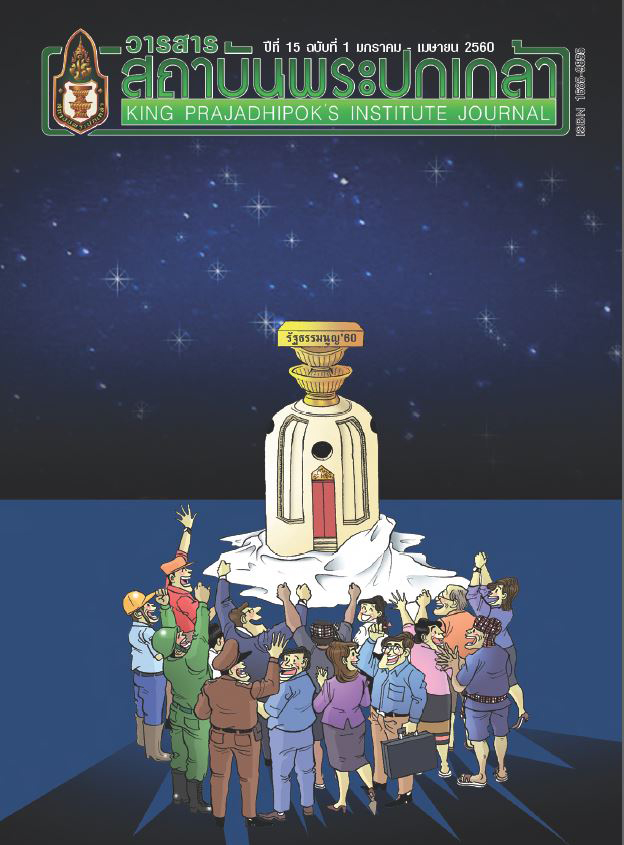Reconciliation from Grassroots: Lesson Learned Initiated from Victims and Communities in Greensboro, North Carolina, USA.
Main Article Content
Abstract
On November 3rd, 1979, the Greensboro Massacre perpetrated by members of the Ku Klux Klan which iswere white American members of pro-Nazi group. The victims were members of the Communist Workers’ Party, mostly rather poor
people of color. The attack left five people dead and ten injured. In 2003, the victims and members of various parties in Greensboro established a committee called “Greensboro Truth and Reconciliation Commission” to investigate the incident.
This commission was the world’s first grassroots-initiated reconciliation commission. This commission was also well recognized by various organizations. The author of this article intended to reflect on lessons learned from the work of the committee. The author will focus on how the committee employed the concept of restorative justice. The core concepts include non-revenge and non-violence. At the same time this concept works along with deliberative dialogue relating to the cause and structure of violence during the 1979 Massacre and its impact. The process moved along with dialogue among involved parties. All participants listened to each other in a participatory democratic atmosphere. The author also proposed that if any community in the world faces a tragedy like the Greensboro Massacre, this lessons learned model for conflict resolution can be applied at the initiative of the people in the community
themselves.
Article Details
@ 2020 King Prajadhipok's Institute The Government Complex Commemorating All Right Reserved.
References
Androff, D. (2010). “To not hate”: reconciliation among victims of violence and participants of the Greensboro Truth and Reconciliation Commission. Contemporary Justice Review. 13 (3), 269-285.
Banker’s Notes. (2013). The Greensboro Massacre. Retrieve from http://www.bankersnotes.com/2013/11/the-greensboro-massacre.html
Bermanzohn, S.A. (1998). The Greensboro massacre: Political biographies of four surviving demonstrators. New Political Science. 20 (1), 69-89.
Cunningham, D. (2008). Truth, Reconciliation, and the Ku Klux Klan. Southern Cultures, 14 (3), 68-87.
Cunningham, D., Nugent, C., & Slodden, C. (2010). The Durability of Collective Memory: Reconciling the “Greensboro Massacre”. Social Forces. 88 (4), 1517-1542.
Democraticunderground. (2016). Who else remembers the I-95 “You are in Klan Country” Billboard circa 1970? Retrieve from http://www.democraticunderground.com/10023422302
Drabinski, J.E. (2013). Reconciliation and Founding Wounds. Humanity: An International Journal of Human Rights, Humanitarianism, and Development. 4 (1), 117-132.
States. (2016). 50 States in USA. Retrieve from http://www.50states.com/ncarolin.htm
Greensboro Truth & Reconciliation Commission. (2006). Greensboro Truth & Reconciliation Commission. Retrieve from http://www.greensborotrc.org/
Hayner, P. B. (2010). Unspeakable Truths: Transitional Justice and the Challenge of Truth Commissions. London: Routledge.
Inwood, J. (2012a). Righting Unrightable Wrongs: Legacies of Racial Violence and the Greensboro Truth and Reconciliation Commission. Annals of the Association of American Geographers. 102 (6), 1450-1467.
Inwood, J. (2012b). The politics of being sorry: the Greensboro truth process and efforts at restorative justice. Social & Cultural Geography. 13 (6), 607-624.
Jovanovic, S. (2012). Democracy, Dialogue, and Community Action: Truth and Reconciliation in Greensboro. Fayetteville: University of Arkansas Press.
King, M. L. (1986). Where do we go from here: chaos or community?, in Washington, J. (ed.) A Testament of Hope: The Essential Writings and Speeches of Dr. Martin Luther King Jr. San Francisco, CA: Harper Collins.
Lederach, J. P. (1997). Building Peace: Sustainable Reconciliation in Divided Societies. Washington D.C.: United States Institute of Peace.
Lederach, J. P. (2005). The moral imagination: The art and soul of building peace. Oxford: Oxford University Press.
McCarty, J.W. (2013). The Embrace of Justice: The Greensboro Truth and Reconciliation Commission, Miroslav Volf, and the Ethics of Reconciliation. Journal of the Society of Christian Ethics. 33 (2), 111-129.
N&R Greensboro. (2016). Historic Photos Of The 1979 Klan-Nazi Shooting. Retrieve from http://www.greensboro.com/gallery/historic-photos-of-the-klan-nazi-shooting/collection_5f9c6510-a189-11e4-b960-33048c9cea26.html
Williams, J.E. (2009). Legitimacy and Effectiveness of a Grassroots Truth and Reconciliation Commission. Law and Contemporary Problems. 72 (2), 143-150.


